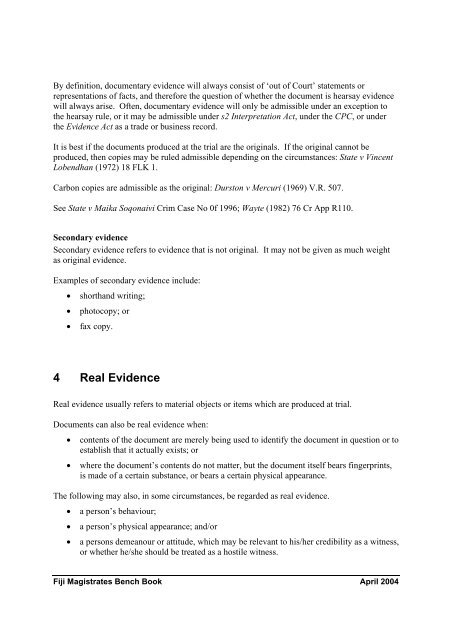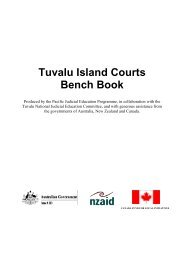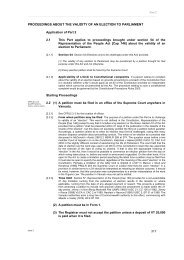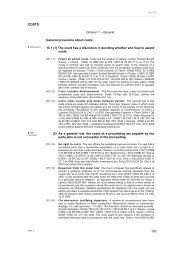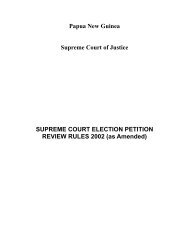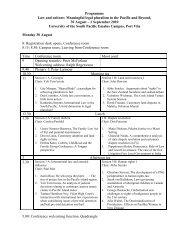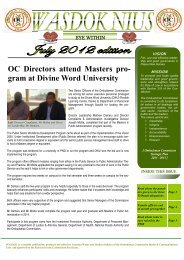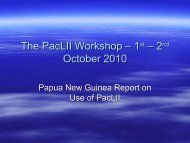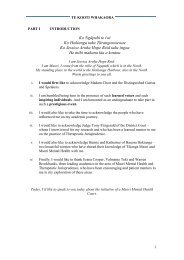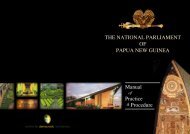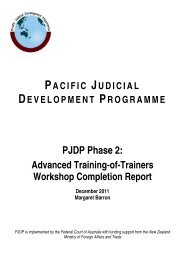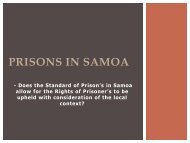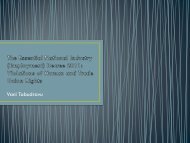Fiji Magistrates Bench Book - Federal Court of Australia
Fiji Magistrates Bench Book - Federal Court of Australia
Fiji Magistrates Bench Book - Federal Court of Australia
You also want an ePaper? Increase the reach of your titles
YUMPU automatically turns print PDFs into web optimized ePapers that Google loves.
By definition, documentary evidence will always consist <strong>of</strong> ‘out <strong>of</strong> <strong>Court</strong>’ statements or<br />
representations <strong>of</strong> facts, and therefore the question <strong>of</strong> whether the document is hearsay evidence<br />
will always arise. Often, documentary evidence will only be admissible under an exception to<br />
the hearsay rule, or it may be admissible under s2 Interpretation Act, under the CPC, or under<br />
the Evidence Act as a trade or business record.<br />
It is best if the documents produced at the trial are the originals. If the original cannot be<br />
produced, then copies may be ruled admissible depending on the circumstances: State v Vincent<br />
Lobendhan (1972) 18 FLK 1.<br />
Carbon copies are admissible as the original: Durston v Mercuri (1969) V.R. 507.<br />
See State v Maika Soqonaivi Crim Case No 0f 1996; Wayte (1982) 76 Cr App R110.<br />
Secondary evidence<br />
Secondary evidence refers to evidence that is not original. It may not be given as much weight<br />
as original evidence.<br />
Examples <strong>of</strong> secondary evidence include:<br />
• shorthand writing;<br />
• photocopy; or<br />
• fax copy.<br />
4 Real Evidence<br />
Real evidence usually refers to material objects or items which are produced at trial.<br />
Documents can also be real evidence when:<br />
• contents <strong>of</strong> the document are merely being used to identify the document in question or to<br />
establish that it actually exists; or<br />
• where the document’s contents do not matter, but the document itself bears fingerprints,<br />
is made <strong>of</strong> a certain substance, or bears a certain physical appearance.<br />
The following may also, in some circumstances, be regarded as real evidence.<br />
• a person’s behaviour;<br />
• a person’s physical appearance; and/or<br />
• a persons demeanour or attitude, which may be relevant to his/her credibility as a witness,<br />
or whether he/she should be treated as a hostile witness.<br />
<strong>Fiji</strong> <strong>Magistrates</strong> <strong>Bench</strong> <strong>Book</strong> April 2004


